Home »
Misc »
How to become a sharpshooter in basketball
How to become a sharpshooter in basketball
3 Tips to Help you become a Sharpshooter in Basketball
A sharpshooter in basketball is simply a player who is known for knocking down shots.
This basketball player is considered to be a lights out shooter, and if they get an open shot everyone in the gym expects them to knock it down.
Though this player may be good at many different things, this player is known for their ability to shoot. This person specializes in taking and making open catch and shoot 3’s.
Catch and shoot 3’s are typically the most taken shots among sharpshooters, so in order to be one you have to shoot these shots at a high percentage.
The most important “skill” a sharpshooter has is that they have this belief in themself that every single shot that they shoot is going to go in. Confidence is key to being a good shooter, and is something that can be taught.
In our opinion it is having superior footwork when receiving the ball.![]() You never know what it takes to get your shot off. Having great footwork makes it easier to get your balance under you and give you an explosive jump through your shot which will help speed up the release.
You never know what it takes to get your shot off. Having great footwork makes it easier to get your balance under you and give you an explosive jump through your shot which will help speed up the release.
Great shooters are able to get into their shots in a handful of different ways.
- They can get into their shots off of a hop, where they are essentially jumping into the catch.
- 1-2 Stepping into their shots. This could be stepping left-right or right-left. WIth either the 1st step coming on the pass, or the first “step” already being planted and taking a step in with the other foot.
- Side Steps are a great way for shooters to get into their shot and are used in a majority of cases from NBA players when shooting in the corner. The shooter starts in a wide stance and brings one foot in towards the other foot.
- They are also good at coming off of screens. Because when you come off of a pin down or a flair, your footwork needs to be different depending on the movement.

Some other things that a player could work on to become a sharpshooter is work on shooting off of bad passes and delaying their sight on the rim.
These are two scenarios that happen in games that are out of the shooter´s control, but are things that the shooter can purposely work on during their workout. They can work on taking shots off the move or spot up shots and not look at the rim until you get a catch.This will help simulate a game.
Be shooter ready. The player can also receive bad passes from their partner because in games you won’t always get a good pass, so you need to be able to get into your shot even off of bad passes.
And, the most important thing that a player can do to become a sharpshooter is shoot hundreds and hundreds of shots every day in practice sessions. Eventually striving to shoot thousands of shots in a day. Having a pre-game shooting routine is also very important.
3 Tips to become a sharpshooter:
Today, we are not going to go over: Shooting hand, feet shoulder width, wrist flexibility. .. We already wrote an article giving you 5 Tips to Improve your Shooting Mechanics.
.. We already wrote an article giving you 5 Tips to Improve your Shooting Mechanics.
Be OVERCONFIDENT in your abilities.
This means to be so sure of your abilities that if you get an open shot you KNOW that it is going in. And if you miss, you know the next one is going in. Even if you are 0-100.
Confidence just helps you get to the abilities that you’ve worked for. Being overconfident can’t make bad shooters good.
Work on getting your shot off quicker!
The better shooter you are the less time you’ll have to shoot it (because teams will play you as such).
You can use some of the tips we gave earlier to speed up your shot.
Mainly footwork. Knees bent. Ready to Shoot.
If you think you got enough shots up today…
You probably haven´t
Always want more.
Don’t let anyone outwork you
Top 5 Sharpest Shooters in the NBA 2022
Steph CurryAlthough he’s not just a sharp shooter but one of the best shooters in the world, any list that is ranking any type of shooter Steph Curry has to be at the top.
Cam JohnsonCam Johnson is a huge reason for the Suns success this year and helps give CP3 and Devin Booker so much space to operate.
Cam shoots 45% from the 3 point line and out of his 2.7 Made 3’s, 2.5 are off of catch-and-shoot. SNIPER!!
Luke KennardKennard is one of the most underrated shooters in the NBA this year. A crazy stat you almost never see… He shoots the ball with a higher% from 3 than he does from 2 this year.
He shoots 46.5% on catch-and-shoot 3’s this year making 2.2 a game. He shoots 45% from all 3’s and makes 2.7 a game.
Patty MillsPatty Mills is a seasoned vet and has been successful in the role he is playing with Brooklyn this year.
Patty Mills makes 3 3’s a game, while 2.4 of them come off of catch-and-shoot and he shoots 43% from the catch-and-shoot 3’s.
Malik BeaslyAnother player that is underrated as a sharpshooter.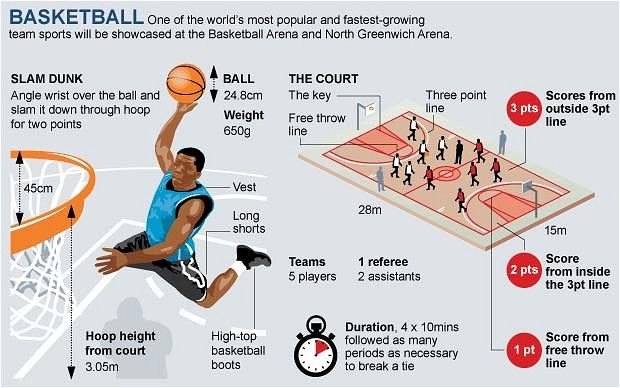 He’s proven to be one of the best this year!
He’s proven to be one of the best this year!
He shoots a lower percentage than the other guys on catch-and-shoot 3’s, at 38%, but he makes 2.6 of them a game(league leading).
Honorable Mentions:
Joe HarrisAlthough he has been hurt for most of the year he has proved himself through his career and before his injury that he is as lights out as it gets.
Before injury he was making 2.7 catch-and-shoot 3’s a game while shooting 47%!!
Buddy HieldBuddy Hield is one of the best shooters in the NBA but just barely misses out on this list. He shoots 39% from catch-and-shoot while making 2.2 a game, but he does make a lot of 3’s off of the bounce for a total of 3.3 3’s a game.
Duncan RobinsonAlthough he hasn’t been shooting as high of a percentage this year as in years past, he gets played like he´s still the best shooter in the NBA.
Klay ThompsonPre Injury he would have a case at #1 this year. And hoping he can get back to that, but like Joe Harris not enough playing time this year to make the list.
And hoping he can get back to that, but like Joe Harris not enough playing time this year to make the list.
We will talk again in a couple of days but for now... #BringYourAgame
Elevate Your Game, Become A Sharpshooter
Elevate Your Game, Become A Sharpshooter
They say that the best shooters in the world all share one particular quality — once they’re in the gym, they’re in range. Take our very own Stephen Curry, who often takes to the tunnel during pre-game to fire a few off from there before exploding for six made three-pointers. To CoachUp, that’s not a coincidence — that’s an exhibition of Curry’s talents that he’s so tirelessly worked on. To be a sharpshooting assassin like Stephen, you’ve got to be able to hit from all over — not just from three or near the paint. That’s what makes an engaging threat so incredibly tough to guard, the defender never knows where he’ll pull up next! To improve your shooting, you first need to know the basics of shooting and how to diagnose what is wrong with your current shot. To do that, it can be a little tougher, so start simple and get back to basics.
To do that, it can be a little tougher, so start simple and get back to basics.
Square Zero
These following drills will help you reinstall some confidence in your form while reminding new and old players of any level the fundamental basics that can help them get their shot back on track. First, stand directly in front of the basket about two to five feet away. Get in a good shooting stance: feet shoulder width apart, heels slightly off the ground, and knees bent slightly — no more than 45 degrees — with your back straight. Your strong foot should be slightly ahead of the other one, ready to receive the ball.
Grab a partner and have him or her toss the ball to your shooting hand; remember, your palm should be face up and directly in front of you with your other arm to the side. Slowly bring the ball up into a shooting position and stop — this is done with just one hand. The ideal shooting position is just above the eye but in a spot that does not obstruct your view.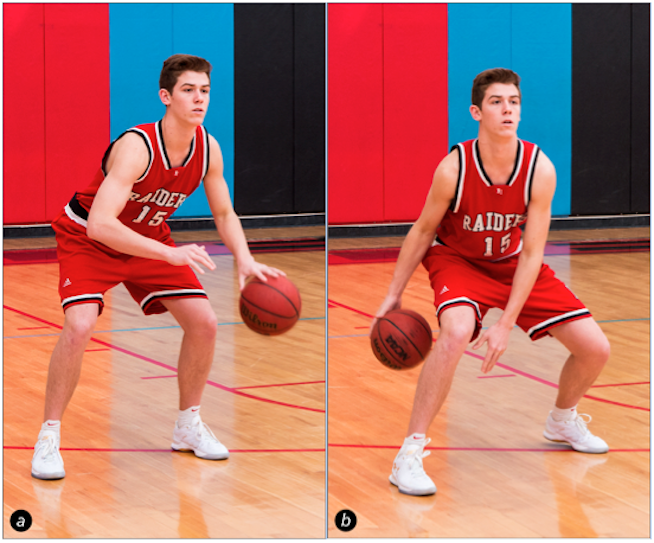 At this point, several things should be in place: your shooting elbow should be in a straight line above your knee and pointing toward your target. Additionally, the bottom of your arm should be parallel to the ground and your wrist should be bent back to allow your arm to be in a 90 degree position.
At this point, several things should be in place: your shooting elbow should be in a straight line above your knee and pointing toward your target. Additionally, the bottom of your arm should be parallel to the ground and your wrist should be bent back to allow your arm to be in a 90 degree position.
Train Like An Animal
The fingers you have on the ball should be spread out with your index finger placed in the center. Use your legs and proceed to shoot, finishing on your toes with your shooting hand splayed toward your target. Don’t forget to hold your follow through until the ball touches rim or net! Repeat this process but be methodical. On every shot, use positive key words for immediate mental feedback -– say these words out loud! For makes, say something that practices good reinforcement like swish or score.
If your shot is short, which means the ball hits the front of the rim or misses entirely, try saying something like legs — most of your power comes from the legs, so you can use it as reminder to use more of it! Conversely, if you’re long, try saying arch. This will act as a reminder that if the ball had more arch, the shot might’ve had a higher percentage of going in. Likewise, you can say left or right if your shot is wildly off in either direction.
This will act as a reminder that if the ball had more arch, the shot might’ve had a higher percentage of going in. Likewise, you can say left or right if your shot is wildly off in either direction.
Stepping Out, Stepping Up
Once you can make ten to fifteen in a row, move back somewhere between three and five feet — but remember this is all still with just one hand! Do this from different angles and distances up to about eight or ten feet, until you feel comfortable with each range and difficulty. Eventually, you can move to using both hands again. Use the non-shooting hand for ball stability and support only and begin to hit jump shots from all over — shots off the dribble, catch and shoot, you can even use special scenarios and act them out on the court. Ensure that you are using proper form on each one, and if a shot goes off-course, go back to step one. Here, there are no shortcuts to success.
The best shooters in the world do form shooting before practice and games, so working out the kinks isn’t above anybody.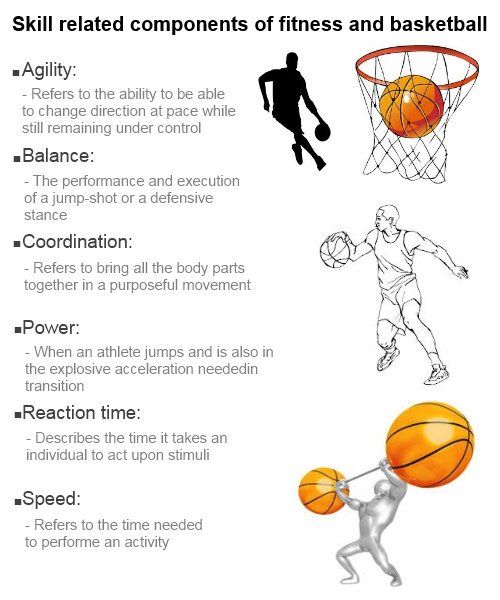 You don’t need a basket, either – as long as you have a flat surface, you can shoot against anything. It’s better to visualize a basket and to make sure that most of your shooting is done at regulation height, but if you have the side of a building, or something similar, you can make do anywhere — so no more excuses.
You don’t need a basket, either – as long as you have a flat surface, you can shoot against anything. It’s better to visualize a basket and to make sure that most of your shooting is done at regulation height, but if you have the side of a building, or something similar, you can make do anywhere — so no more excuses.
(Related: Read about improving your vertical leap here.)
Huddle Up
Whether you’re having trouble getting out of a slump or finding your range at a specific spot on the court, these tips could help get you back on the same page with your body. For many professionals, these types of drills are practical and essential during long road trips and slumps. If you can’t hit from fifteen feet consistently, try moving into twelve feet until you’re nailing them at upwards of 70%.
However, if you’re still struggling with your slump or just simply understanding the concepts and ideals behind a smooth, reliable jumper, consider booking one of CoachUp’s private trainers to help you out.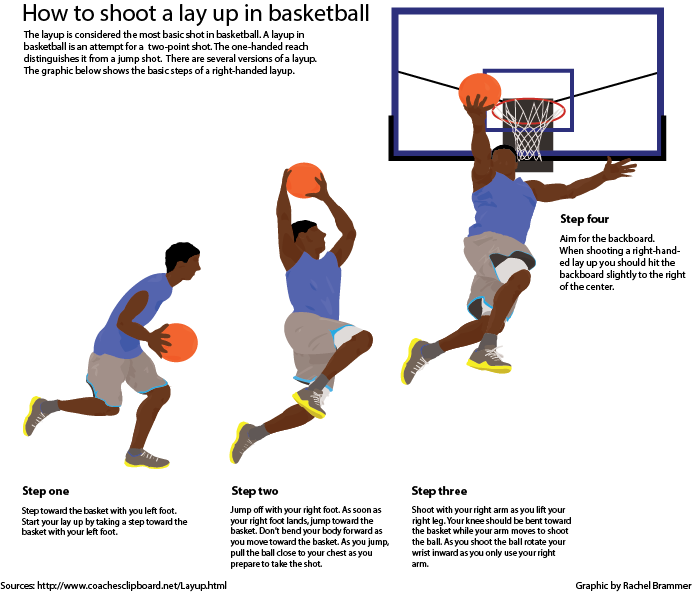 It doesn’t matter what your skills are or where you want to go, our dedicated team will have you firing on the court like Curry in no time. What are you waiting for?
It doesn’t matter what your skills are or where you want to go, our dedicated team will have you firing on the court like Curry in no time. What are you waiting for?
How useful was this post?
Click on a star to rate it!
Average rating 0 / 5. Vote count: 0
No votes so far! Be the first to rate this post.
Basketball sniper. In the right place, at the right time - Basketball - discover and experience - Blogs
Basketball - discover and experience
Blog
This post was written by a Sports.ru user, every fan can start writing (you can do it here).
SNIPER; and. [English] sniper]
1. Marksman, camouflage and surveillance
2. Prof. An athlete who without a miss scores a goal into the goal, the opponent's basket.
Encyclopedic Dictionary. 2009.
Often a player who brings a lot of points is called a sniper in basketball. But, in my opinion, a sniper is different in that often the percentage of hits is higher than that of a player who scores a lot of points (scorer). And sometimes without scoring a lot, they hit the right balls in key moments of the game. These typical shooters were NBA 3-point record holders - Ray Allen 19 seasons, last club Miami Heat, Reggie Miller of the Indiana Pacers or Larry Bird of the Boston Celtics. The role of such a sniper is great. Especially in teams where there are versatile attacking leaders, such as M Jordan, K. Bryant or L. James, D. Harden and S. Curry, who are now dominant.
And sometimes without scoring a lot, they hit the right balls in key moments of the game. These typical shooters were NBA 3-point record holders - Ray Allen 19 seasons, last club Miami Heat, Reggie Miller of the Indiana Pacers or Larry Bird of the Boston Celtics. The role of such a sniper is great. Especially in teams where there are versatile attacking leaders, such as M Jordan, K. Bryant or L. James, D. Harden and S. Curry, who are now dominant.
The tactics of defending teams playing against rivals with super-scoring players in their roster comes down to doubling or even tripling such a leader. And at this moment, the presence of a scoring performer stretches the defense and helps to find a free attack of the opponent's ring. Defenders are afraid to move away from their guardian, as this can lead to an instant discount for a three-point shot, and therefore the opportunities for hedging or helping a defender left one on one are minimal.
Can anyone play the role of such a sniper? No, it is very difficult to find, but it is even more difficult to raise such a sniper.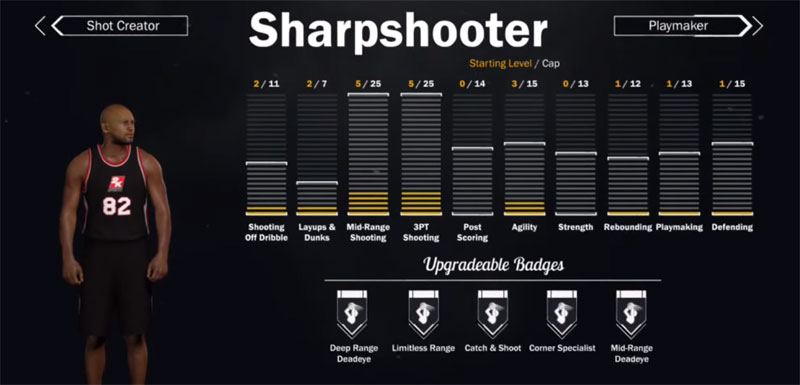 In order to effectively attack in a limited amount of time, most often playing most of the match without the ball, well, in a psychologically difficult moment of the game, you need resistance to mental and physical stress and self-control. Many factors go into the ability to fulfill this role, and many of the necessary qualities of a sniper simply cannot be trained.
In order to effectively attack in a limited amount of time, most often playing most of the match without the ball, well, in a psychologically difficult moment of the game, you need resistance to mental and physical stress and self-control. Many factors go into the ability to fulfill this role, and many of the necessary qualities of a sniper simply cannot be trained.
The winner is not the one who shoots first, but the one who hits first
When selecting candidates for the position of a sniper, professional and psychological selection is very important. In its process, the main task is solved. Identification of persons who, by their professional, psychological, psycho-physiological, and physical and technical qualities, are capable of performing the functions of a sniper. This ensures the prevention of a significant part of professional mistakes and neuropsychic breakdowns in the course of player development during the championship.
All candidates are evaluated by the following qualities:
determination,
Professional sense of debt
Moral principles
Motivation intensity
levels of claims, adequacy of self -esteem, self -confidence, social maturity, responsibility, decisiveness, decisiveness in difficult environments, realism, flexibility of behavior
resistance to mental and physical stress
level of self-control (restraint, balance, self-control).
There is a system of tests that can help in a relatively short period to determine the suitability of candidates. Psychological characteristics make it possible to assess the significance of the qualities and properties of the personality of athletes in various situations of gaming activity in general. This allows the role orientation to be carried out more purposefully and reliably. But it is also impossible to overestimate information models, no matter how high the qualifications of the surveyed experts are.
Because the exercises that the coach offers in team sessions are certainly not enough. The more and more purposefully a player works independently, the more chances he has to be useful to the team as a long-range sniper.
Once upon a time there was an excellent shooter. Hit the coin for a kilometer. The king arranged a shooting competition. The main prize is a bag of gold. The king personally held the coin in his outstretched hand, God forbid he missed, his head off his shoulders. The shooter pulled the string, but from excitement he went blind, his hands were shaking… He fired an arrow. The arrow went straight to the king's head. - Like a pumpkin! - the heir to the throne laughed and gave the shooter 2 bags of gold.
The shooter pulled the string, but from excitement he went blind, his hands were shaking… He fired an arrow. The arrow went straight to the king's head. - Like a pumpkin! - the heir to the throne laughed and gave the shooter 2 bags of gold.
Shooting exercises
replica swiss watches
Basketball is a great team game, the team consists of players whose skill is achieved with great effort. The only person who can understand that you are working hard is yourself. Remember, you only get out of the game what you put into it. Give yourself to her without a trace.
Jump shot
In basketball, an outstanding sniper is a piece item. If you want to be a great sniper, all you need to do is just want to be one.
First, you must improve your craft.
This includes having a good coach and years of training. Secondly, you must improve in game mode.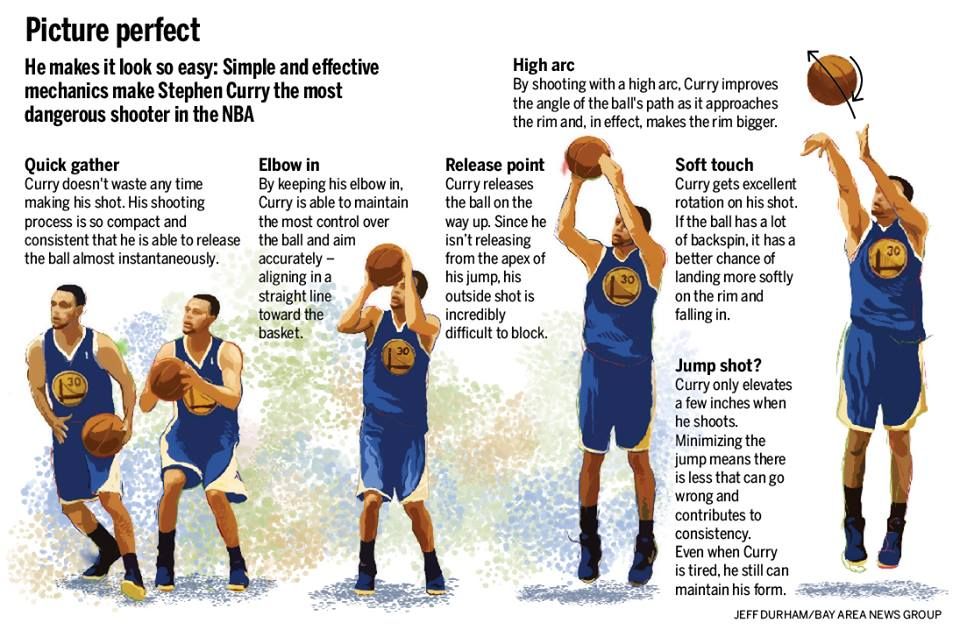
This means that you must perform throwing drills at the same intensity as in the game. It's far better to hit 100 shots in play than 500 sloppy shots that a good defender would never let you make in a game. Finally, you must understand that working on a roll is like investing in a bank. If you don't deposit anything into your account, you won't receive dividends when you need them.
The sniper must have "throw school". When throwing after a dribble, one of the main features is the last hit of the ball on the court, which must be fast and strong so that it bounces higher, right into your hands - this will help you not waste time handling the ball.
Individual Shooting Exercises
Exercise 1 Attention Concentration
- Start from a distance close to the ring.
- Throw with one hand. Follow correct technique.
- Do five from each position. Take a step back and repeat (Fig. 1).
Exercise 2 7 throwing positions and rebound (4 meters)
- Jump shot from position 1.

- Pick up the ball, dribble quickly to position 7, shoot.
- Pick-up, fast with lead back to position 1.
- Make 10 rolls.
- Repeat the same steps using positions 6 and 2, 5 and 3, 4 (Fig. 2).
Exercise 3 7 shooting positions and a rebound (from behind the three-point line)
1. Repeat the same steps as in exercise 2 (fig. 3).
Exercise 4 Throw after stop
- Start from position 1, toss the ball to position
- Pick it up, while you must run around the ball so that you are facing the ring.
- Make 10 rolls, then advance to the next position.
Ex.5 Shooting from five positions after a fake move (from four meters or from behind the three-point line)
- Start from any position.
- On bent knees and with your head up, you do a throw feint, hit the ball one or two with your right hand, stop and jump.
- Get back into position, throw feint, one or two hits with the ball with the left hand, stop, throw.

- At each position, 5 attempts (Fig. 5).
Exercise 6 Jump shots after dribbling
- Start the exercise from the center of the field, move towards the dribbling ring at game speed, after stopping quickly shoot.
- The shot must be taken from a middle distance or from behind a three-point arc. Perform the exercise, both on the right and on the left and in the middle of the site.
- Use different types of dribbles: fast dribbles, broken tempos, pivots, etc.
- Make 5 attempts in each direction (Fig. 6).
Exercise 7 Playing with a virtual opponent
- Perform a free throw. If you have implemented it, you get one point. If not, then your "opponent" is three.
- You make subsequent throws from any position except the three-second zone, imitating the rhythm of the game. Work on different moves and throws. Each of your successful attempts is estimated at the bottom of the point, unsuccessful at two for the "opponent".
 The game goes to 11 points.
The game goes to 11 points. - This is a very good exercise to consolidate what you have learned. Try! Improve! (Fig. 7).
Double shots
Dr. 8 2 players, shot and rebound (4 meters or from behind the three-point line)
- Drill starts with a good, clear pass. The player who made the pass from under the basket goes to the place of the thrower.
- The player in position 1 catches the ball and shoots.
- After the shot, the player runs to the rebound and then passes the ball 1 position and so on.
- Each player must make five throws. The exercise is performed at a fast pace, but the throws should not be sloppy.
- Then move to another position and everything is the same (Fig. 8).
Exercise 9 Two players, throw and rebound (per result)
- The exercise is performed as described above.
- The player who made the pass tries to interfere with the shot, but does not block.

- Game up to 5 hits.
- Then we move to another position, and so on. (Fig. 9).
Exercise 10 Two players, throw and rebound, throw feint
- The exercise is performed in the same way as the previous one.
- The defender who made the pass tries to interfere with the player in position 1, but does not block the shot.
- The attacker makes a throw feint and beats the defender.
- Performs a short dribble, stops and throws.
- Do 5 times each and change position (Fig. 10).
Ex. 11 2 players, shot after a stoppage (from four meters or from behind the three-point line)
- The attacker is in position 1, ready to receive the pass.
- The player under the basket passes.
- After the throw, the attacker waits for the rebound to be made.
- The player receives a pass by making a stop, but already in position 2. Then back.
- Make 7 throws, two free throws and switch (fig.
 11).
11).
Ex. 12 Moving shots (from four meters or three-point arc)
- Attacker moves around the perimeter at game speed.
- A player passes to the hand farthest from the ring.
- The attacker must stop, catch the ball and throw.
- Make seven throws, two free throws and change (fig. 12).
Note: The previous exercise has three variations.
A) Receive the ball and throw it.
B) After receiving, throwing feint, dribbling in the same direction, throwing.
B) Receives a pass, throw feint, dribbling to the ring in the other direction, stop, throw.
Ex.13 Various dribbling options and a jump shot
- The attacker starts from the center of the field and, dribbling at game speed, moves towards the ring, stops and takes a jump shot.
- The player under the basket picks up the ball, the attacker runs to the center of the field, and receives the ball on the opposite flank.
 Moves with dribbling to the ring, stop, jump shot.
Moves with dribbling to the ring, stop, jump shot. - On the right side, dribbling with the right hand, on the left - with the left (Fig. 13)
Note: Use speed dribbling, change of pace, transitions, pivots.
Three players, two balls
Exercise 14 Warm-up exercise
- One player throws, another passes, a third rebounds.
- Thrower becomes rebounder after seven tries.
- Passer - thrower. Picking up - passing (Fig. 14).
Note: different options are possible
1) From seven positions (four meters)
2) From seven positions (from behind the three-point arc)
3) From five points with feints to shoot
4) Throw after stoppage
5) Throw and rebound (constant rotation around the circle)
Double shots: using screens
To use the screen effectively, you must read the defender correctly. You must always see the player with the ball and how the defender defends against you. A player who moves well off the ball and knows how to use screens correctly is very useful offensively. When you watch a match that has good players, notice how well they move off the ball. The hardest thing to defend against is a well-moving attacker.
A player who moves well off the ball and knows how to use screens correctly is very useful offensively. When you watch a match that has good players, notice how well they move off the ball. The hardest thing to defend against is a well-moving attacker.
Exercise 15 Back screen and snatch
- The player imitates opening and screening behind his back, makes a dash to the corner of the court.
- Throw to near hand.
- Attacker catches the ball and shoots.
- The attacker picks up his shot, passes to a partner and returns to his original position.
- Make seven attempts and change (Fig. 15)
Note: do not back away when dashing, turn and run, but do not lose sight of the ball.
Ex. 16 Screening behind the back, "false" screening
- 1. Attacker starts on the base of the trapezoid and moves up to imitate the screening.
- 2. After the imaginary breakout runs, the screening attacker rises to the ball and prepares to receive the pass.
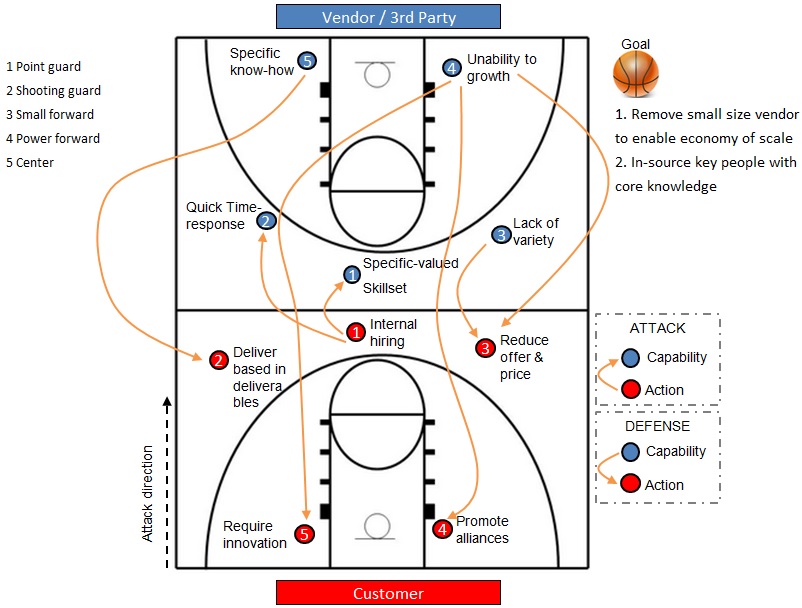
- 3. Having caught the pass, he immediately makes a throw.
- 4. Make seven attempts and change (Fig. 16).
0003
- An attacker imitates a defender aiming for a screen and rises sharply towards the ball.
- The player must be ready to receive the ball.
- The attacker catches the ball and makes a quick throw.
- Make seven attempts and change (Fig. 17)
Exercise 18 Screening the ball carrier, moving away from the ring
- The attacker screens the ball carrier.
- The ball carrier passes through the screen aggressively.
- Instead of pulling back to the hoop (deuce), the screening attacker moves away from the hoop and prepares to receive the pass.
- Having caught the ball, he immediately makes a throw.
- Make seven attempts, then switch.
Exercise 19 Screen at the base of the trapezoid - opening to the flank
- The attacker takes the player under the ring, breaks shoulder to shoulder through the screen and makes a dash to the flank.

- When catching the ball, the player must turn towards the ring.
- Use different throw options: just throw, and dribbling to the right or left after a throw feint. Change after five attempts (Fig. 19).
Exercise 20 Barrier at the base of the trapezoid - opening into the corner of the court
- The attacker leads the player into the three-second zone, pretends that he will break through to the flank through the barrier, the defender starts running around the defender through the three-second zone.
- An attacker rushes into the corner of the court and the defender hits the screen.
- Next, the same as in the previous exercise (Fig. 20).
Exercise 21 Screen at the base of the trapezoid - dash inward
- The defender is chasing you, not falling behind until the very screen.
- Then you run through the screen as close to the screener as possible and break into the three-second zone or foul line area.
